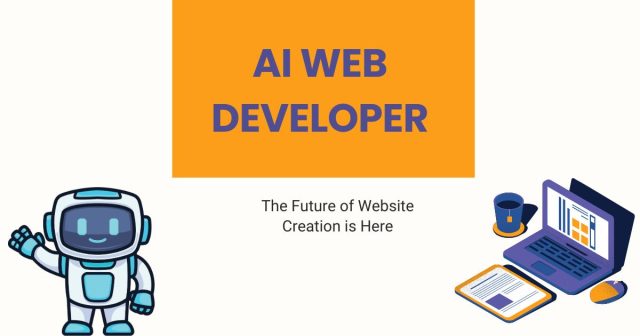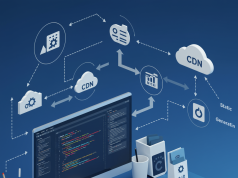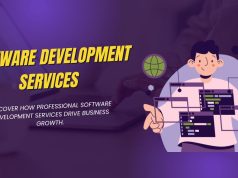The landscape of web development is experiencing a seismic shift. Artificial intelligence has moved beyond simple automation tools to become a sophisticated partner in creating websites, applications, and digital experiences. AI web developers are no longer science fiction—they’re actively reshaping how we approach building for the web.
Whether you’re a seasoned developer curious about AI’s impact on your field, a business owner exploring cost-effective website solutions, or someone interested in the intersection of technology and creativity, understanding AI’s role in web development has become essential. This comprehensive guide explores what AI web developers can do today, their limitations, and how they’re transforming the industry.
From generating clean HTML and CSS to debugging complex JavaScript, AI tools are handling tasks that once required years of training to master. But the real question isn’t whether AI can write code—it’s how these tools are changing the way we think about web development itself.
What is an AI Web Developer?
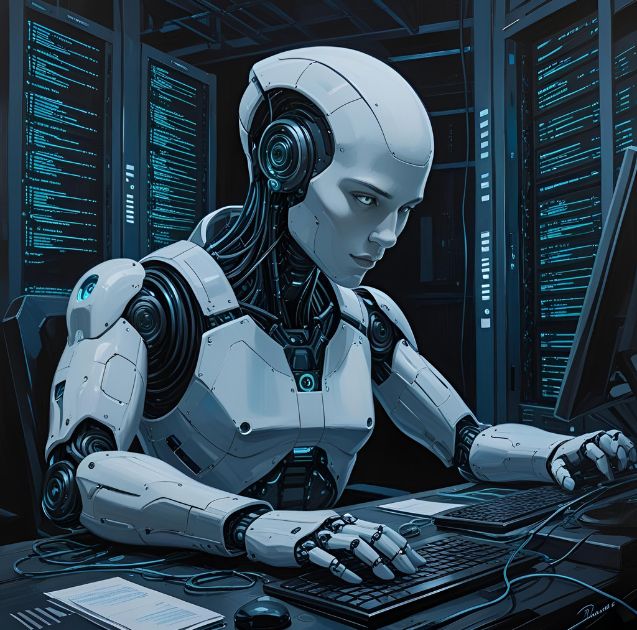
An AI web developer refers to artificial intelligence systems designed to assist with or automate various aspects of website creation and maintenance. These tools range from simple code generators to sophisticated platforms that can build entire websites based on text descriptions or visual mockups.
Unlike traditional development tools that require extensive manual input, AI web developers leverage machine learning models trained on millions of lines of code, design patterns, and web development best practices. They can understand natural language instructions, generate responsive layouts, optimize performance, and even suggest improvements to existing codebases.
The most advanced AI web development platforms can handle multiple programming languages, integrate with popular frameworks like React or Vue.js, and adapt their output based on specific project requirements. Some focus on frontend development, creating user interfaces and interactive elements, while others tackle backend challenges like database management and API development.
Types of AI Web Development Tools
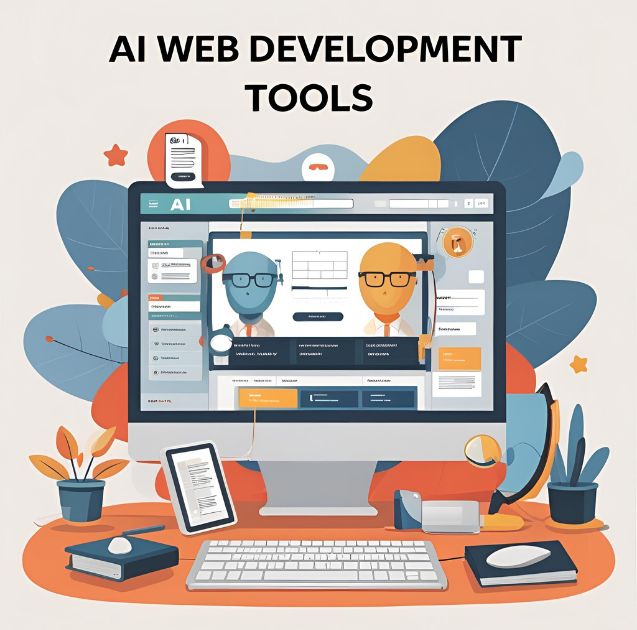
Code Generation Platforms
Code generation tools represent the most direct application of AI in web development. These platforms can produce HTML, CSS, JavaScript, and even full-stack applications based on user prompts or specifications.
GitHub Copilot exemplifies this category, offering real-time code suggestions and completions as developers work. It understands context, suggests entire functions, and can explain complex code segments. Similarly, tools like Tabnine and Replit’s AI assistant provide intelligent autocomplete features that go far beyond simple syntax highlighting.
More advanced platforms like GPT-4 can generate complete web pages, including responsive designs, interactive features, and optimized code structure. These tools excel at creating prototypes quickly and handling repetitive coding tasks that traditionally consumed significant development time.
Visual Design-to-Code Converters
Visual AI tools bridge the gap between design and development by converting mockups, wireframes, or even hand-drawn sketches into functional code. Figma plugins powered by AI can export designs as clean, production-ready HTML and CSS, maintaining design fidelity while ensuring code quality.
Tools like Sketch2Code by Microsoft analyze images of user interface mockups and generate corresponding HTML markup. These solutions particularly benefit teams where designers and developers work separately, reducing the time and potential errors involved in translating visual concepts into code.
Website Builders with AI Integration
Modern website builders increasingly incorporate AI to streamline the creation process. These platforms combine drag-and-drop functionality with intelligent suggestions for layout, content, and optimization.
Wix ADI (Artificial Design Intelligence) creates complete websites based on user responses to a few questions about their business or preferences. The AI selects appropriate templates, images, and content structure, then allows for customization. Similarly, platforms like Bookmark and Zyro use AI to generate websites that match specific industries or purposes.
Capabilities of AI Web Developers
Frontend Development
AI excels at creating user interfaces that are both visually appealing and functionally robust. Modern AI tools can generate responsive CSS that adapts seamlessly across devices, create interactive JavaScript components, and implement complex animations with minimal input.
The ability to understand design principles means AI can suggest color schemes, typography choices, and layout options that follow established UX best practices. When provided with brand guidelines or example websites, AI can maintain consistency across multiple pages while introducing appropriate variations.
AI tools also handle accessibility concerns effectively, automatically generating alt text for images, ensuring proper heading structures, and implementing keyboard navigation. This built-in accessibility support helps developers create inclusive websites without requiring specialized knowledge of WCAG guidelines.
Backend Development
Server-side development benefits significantly from AI assistance. AI can generate database schemas, create API endpoints, and implement authentication systems based on project requirements. The ability to understand relationships between different data types allows AI to suggest efficient database structures and optimize queries for performance.
AI tools can also handle integration with third-party services, generating the necessary code to connect with payment processors, email services, or social media APIs. This capability significantly reduces the time required to implement common web application features.
Testing and Debugging
One of the most valuable applications of AI in web development lies in testing and debugging. AI can analyze codebases to identify potential bugs, security vulnerabilities, and performance bottlenecks before they become problems.
AI-powered testing tools can generate comprehensive test suites, including unit tests, integration tests, and end-to-end testing scenarios. They can simulate user interactions, test edge cases, and provide detailed reports on application behavior under various conditions.
When bugs do occur, AI debugging assistants can analyze error logs, stack traces, and code context to suggest specific fixes. This capability proves particularly valuable for junior developers or when working with unfamiliar codebases.
Limitations and Challenges
Code Quality and Maintainability
While AI can generate functional code quickly, the output doesn’t always meet the standards expected in professional web development environments. AI-generated code may lack proper documentation, follow inconsistent naming conventions, or implement inefficient algorithms.
Maintainability becomes a concern when AI generates complex codebases without clear architectural patterns. Human developers may struggle to understand, modify, or extend AI-generated code, particularly as projects grow in scope and complexity.
The challenge extends to code organization and structure. AI tools often focus on solving immediate problems without considering long-term maintainability, scalability, or team collaboration requirements.
Limited Understanding of Business Logic
AI excels at implementing common web development patterns but struggles with unique business requirements or complex domain logic. While AI can create a user registration system, it may not understand the specific validation rules, workflow processes, or integration requirements unique to a particular business.
This limitation becomes more pronounced in enterprise applications where business rules, compliance requirements, and organizational processes play crucial roles in determining technical implementation approaches.
Security Considerations
AI-generated code may inadvertently introduce security vulnerabilities, particularly when handling user input, authentication, or data storage. While AI tools are trained on best practices, they may not account for the latest security threats or implement proper input validation and sanitization.
The rapid pace of security threat evolution means that AI training data may not include information about recently discovered vulnerabilities or attack vectors. This creates potential blind spots in AI-generated security implementations.
Benefits for Businesses and Developers
Accelerated Development Timeline
AI significantly reduces the time required to complete web development projects. Tasks that previously took hours or days can be completed in minutes, allowing teams to focus on higher-level strategic decisions and creative problem-solving.
Rapid prototyping becomes particularly powerful with AI assistance. Business stakeholders can see functional prototypes within hours of expressing their requirements, enabling faster iteration and more informed decision-making throughout the development process.
Cost Reduction
For businesses, AI web development tools can substantially reduce development costs, particularly for simpler websites or applications. Small businesses that previously couldn’t afford custom development can now access AI-powered solutions that create professional websites at a fraction of traditional costs.
The reduction in manual coding time means development teams can take on more projects or dedicate additional resources to complex features that truly require human expertise.
Democratized Web Development
AI lowers the barrier to entry for web development, enabling people with limited coding experience to create functional websites and applications. This democratization opens opportunities for entrepreneurs, small business owners, and creative professionals who want to establish an online presence without extensive technical knowledge.
Educational institutions benefit from AI tools that help students learn web development concepts by providing immediate feedback, suggesting improvements, and explaining code functionality.
The Future of AI in Web Development
Enhanced Collaboration Between AI and Humans
The future of web development lies not in AI replacing human developers, but in sophisticated collaboration between artificial and human intelligence. AI will handle routine tasks, generate boilerplate code, and provide intelligent suggestions, while human developers focus on architecture, user experience, and creative problem-solving.
This collaboration model allows development teams to work more efficiently while maintaining the creativity, critical thinking, and business understanding that human developers bring to projects.
Improved Code Quality and Standards
As AI models continue to improve, we can expect better code quality, more consistent adherence to best practices, and increased awareness of security and performance considerations. AI tools will likely develop better understanding of code maintainability and long-term project sustainability.
Integration with Development Workflows
Future AI web development tools will integrate more seamlessly with existing development workflows, version control systems, and project management tools. This integration will make AI assistance feel more natural and less disruptive to established development processes.
Getting Started with AI Web Development Tools
For Experienced Developers
Experienced developers can begin incorporating AI into their workflow by using code completion tools like GitHub Copilot or Tabnine. These tools provide immediate value without requiring significant changes to existing development processes.
Experiment with AI-powered debugging and testing tools to identify areas where AI can save time and improve code quality. Start with low-risk projects to understand the strengths and limitations of different AI tools.
For Beginners
New developers should view AI tools as learning aids rather than replacements for understanding fundamental web development concepts. Use AI to generate code examples, then study the output to understand how different techniques work.
Focus on learning to evaluate and modify AI-generated code rather than simply accepting it as-is. This approach builds both technical skills and the critical thinking necessary for effective AI collaboration.
For Businesses
Businesses should assess their web development needs and determine where AI tools can provide the most value. Simple websites with standard functionality are excellent candidates for AI-powered development, while complex applications may benefit from AI assistance in specific areas.
Consider starting with AI website builders for quick prototypes or landing pages, then evaluate whether AI-assisted custom development makes sense for more complex requirements.
Shaping Tomorrow’s Web with AI
AI web development represents a fundamental shift in how we approach building for the internet. These tools offer unprecedented opportunities to accelerate development, reduce costs, and democratize web creation, while also presenting new challenges around code quality, security, and maintainability.
The most successful approach involves embracing AI as a powerful ally rather than viewing it as a threat or complete solution. By understanding both the capabilities and limitations of AI web development tools, developers and businesses can make informed decisions about where and how to integrate these technologies into their projects.
As AI continues to evolve, staying informed about new tools, techniques, and best practices will be essential for anyone involved in web development. The future belongs to those who can effectively combine human creativity and strategic thinking with AI’s speed and analytical capabilities.

